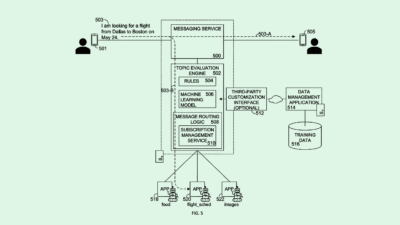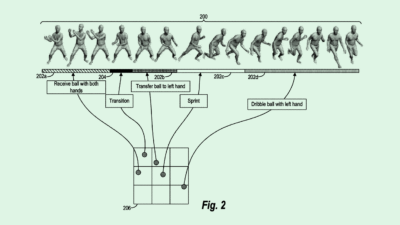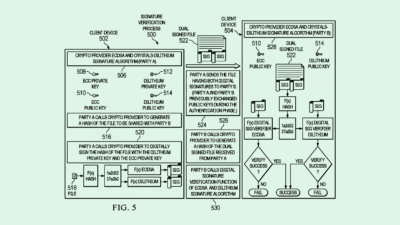Amazon Customizes Clothing (plus more from Facebook & Snapchat)
Bitmoji is the new mall, Amazon’s customised clothing & Facebook’s animated VR avatars
Sign up to uncover the latest in emerging technology.
Bitmoji is the new mall, Amazon’s customised clothing & Facebook’s animated VR avatars
1. Amazon – customised clothing
There has been a flurry of patent activity this week from Amazon around offering customised clothing.
Under the filing, Amazon want to create a digital file system that contains complete manufacturing instructions for any garment. This week, there were 3 separate filings focused on different aspects of this system (here, here and here),
With these files, Amazon could then enable users to be able to input their body measurements and in turn create customised digital files for manufacturers to be able to easily create custom clothing.
The aspiration is to standardise the process of manufacturing garments, and therefore make it easier to customise instructions.
To make this process smooth, Amazon are looking to capture a user’s measurements via submitted photos or through a smartphone camera.
What’s the long-run play here? First, it’s interesting that Amazon are thinking about the manufacturing process, not just the marketplace and delivery logistics. Secondly, does Amazon see customisation and personalisation of products as the next wave of e-commerce? This is most definitely a space to watch.
2. Facebook – animating avatars from VR headset cameras
Facebook are working on mapping our real-world facial expressions to the expressions of our VR avatar characters.
They want to do this by using infrared cameras attached to VR headsets.
The cameras will only capture our face partially, so a big challenge is constructing an avatar’s facial expressions based on these “partial” images.
To get around this, Facebook will use a training headset that has more intrusive infrared cameras to capture more aspects of the face. They will then use this to train a model that can be used to “predict” the full facial expression based on partial images of a less intrusive headset.
The animated avatar will end up reflecting various aspects of a user’s facial expressions, including eye gaze direction, mouth pose, tongue expression, and more.
This filing is interesting in the context of making avatar-to-avatar communication rich, especially in the context of non-verbal body language. When we begin to spend more of our lives in virtual worlds, detached from our physical bodies, a big challenge will be making expression during communication as rich and as frictionless as we’re used to in the real world. Facebook’s patent filing is an attempt at capturing the facial expressions that are hardwired into human communication, and translating it into our parallel virtual identities.
Not to poop on the party, but one privacy side-point – Facebook’s headsets having cameras peering into our face will undoubtedly provide rich data on how humans react to things – including ads, content, people and specific situations. In other words, Facebook’s VR headset also becomes a CCTV camera for tracking the world’s facial expressions.
3. Snapchat – Bitmoji as a shopping mall
So this is super interesting.
Snap’s latest patent filing outlines a system where users can customise the clothing of their virtual avatars based on real items of clothing being sold on a retailer’s website.
So when a user is customising the clothes on their avatar, they would essentially be browsing real-world items from various brands. If they select an item, a representation of that item will be created for a user’s avatar.
This is fascinating for a number of reasons.
Firstly, by integrating an e-commerce experience into Bitmoji, Snap make the process of ‘shopping’ extremely engaging. It’s participatory. It’s embedded in an already familiar behaviour of customising avatars. It’s a win-win for users and the Snap platform – users get more choice on how to customise their avatars, while Snap wins either through advertising revenue, partnership money or commission on any sales via Snap.
Secondly, Bitmoji makes shopping social. By looking at your friends’ Bitmoji, you can discover new looks, new brand or interesting clothing items. In essence, each user of Snap also becomes a micro fashion influencer to their immediate friend group.
Thirdly, a user’s Bitmoji become an interesting way of trying on clothes before making a purchasing decision. In the same way that a user’s avatar is already a vehicle for self-expression, incorporating items from real-world brands allows users to ‘test’ out a look on their digital equivalent, before making a real-world purchase.
Lastly, who knows, but in a world where the virtual and the physical continue to blur, perhaps we’ll see people begin to purchase purely virtual clothing items from brands on Snap. Augmented Reality filters will reach a point where we’ll be able to realistically overlay our bodies with digital clothing. We’re not too far away:
Overall, Snap’s filing shows that they want to make Bitmoji the new shopping mall, and my gut is that their e-commerce experience will be a lot more engaging than what is currently happening on Instagram.











